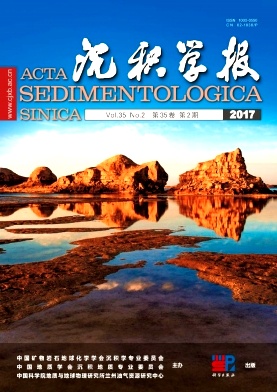Simulation Experiment for the Burial Dissolution of Different Petrofabric Carbonate Rocks of Ordovician in the Ordos Basin
doi: 10.14027/j.cnki.cjxb.2017.02.018
- Received Date: 2016-03-10
- Rev Recd Date: 2016-06-20
- Publish Date: 2017-04-10
-
Key words:
- carbonate rocks /
- burial dissolution /
- simulation experiment /
- petrofabric /
- Ordovician /
- Ordos Basin
Abstract: The development of Ordovician carbonate reservoir in Ordos Basin was obviously controlled by burial dissolution, while the condition and environment of fluid-rock interaction in the deep stratum were much more complicated than the epigenic karstification, which increased the difficulty of burial dissolution study, reservoir evaluation and prediction. This contribution aimed to study the dissolution effects on carbonate rocks with different mineralogical compositions and petrofabric in acetic acid and CO2 solution, under burial environment with simultaneously changing temperature (30℃~180℃) and pressure (5~50 MPa) by equipment of water-rock interaction. For this simulation experiment, the typical six carbonates samples were collected from the Kelimoli and Majiagou Formation of Ordovician in Ordos Basin. The results showed that:1) The dissolution rates of carbonate rocks all increased in acetic acid, while tended to increase firstly when the temperature reached from 30℃ to 120℃ and pressure reached from 5 MPa to 30 MPa, then decreased gradually in CO2 solution with increasing temperature and pressure. The dissolution peak scope were between 110℃ to 130℃ under the condition where CO2 solution acted as dissolution fluid. However, when exceeded the peak, the differentiation of corrosion rates gradually decreased and kept the same in the deep burial settings. 2) Burial dissolution was not only controlled by petrofabric and mineralogical composition, the size and connectivity of pre-existing pores also palyed an important role, except for the condition of temperature, pressure and fluids, the occurrence of crystal could also have significant impact on the dissolution of post diagenesis. As the selective solution of petrofabric, the rocks with lower content of insoluble mineral such as clay mineral and quartz, high grain micrite ratio and complex components were likely more easier to dissolve.With the increase of the calcite content, dissolution rates of carbonate rocks increased as well, but mineral composition content differences contributed little in the deep buried digenetic environments.Anhydrite was prior to dissolution and further developped as gypsum mould pores, at the same time promoted dolomite to dissolve and improve reservoir, when it developed along with dolomite.In terms of different lithology, limestones were more likely to occur burial dissolution than dolomite and transitional rock types.The burial dissolution rates and intensity of calcarenite and gypsodolomite were superior compared with other rock, thus when they inherited the pre-existing pores conducted by the early selective corrosion pore and modulated, superposed with late burial karstification, they were able to become high quality reservoirs based on the analysis in combination with the actual geological conditions.
| Citation: | TAN Fei, ZHANG YunFeng, WANG ZhenYu, DONG ZhaoXiong, HUANG ZhengLiang, WANG QianPing, GAO JunWei. Simulation Experiment for the Burial Dissolution of Different Petrofabric Carbonate Rocks of Ordovician in the Ordos Basin[J]. Acta Sedimentologica Sinica, 2017, 35(2): 413-424. doi: 10.14027/j.cnki.cjxb.2017.02.018 |






 DownLoad:
DownLoad: